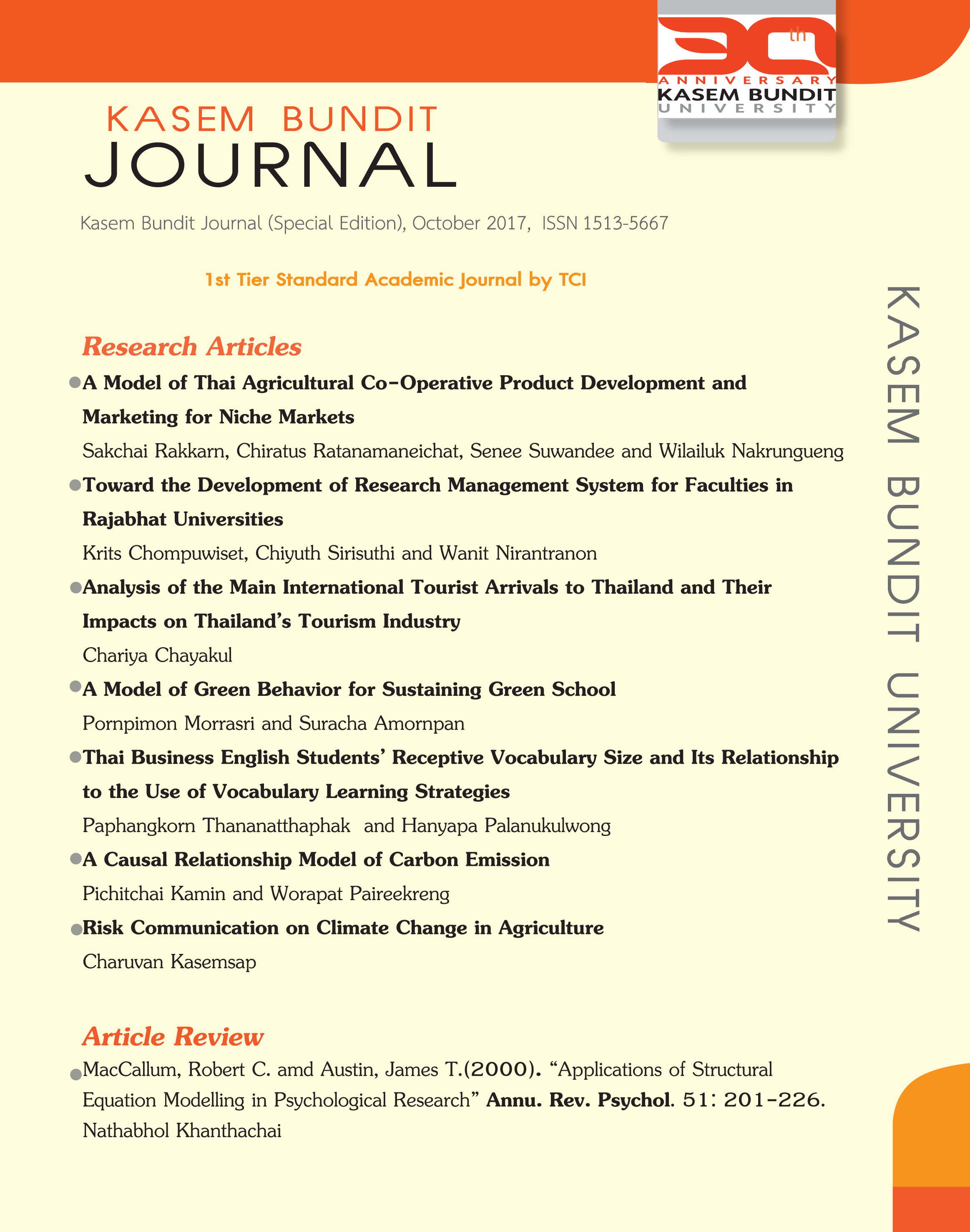MacCallum, Robert C. and Austin, Jame T. (2000). “Applications of Structural Equation Modeling in Psychological Research”, Annu.Rev.Psychol. 51: 201-226.
Keywords:
Psychological ResearchAbstract
Structural Equation Modeling (SEM) represents an extention of general linear modeling (GLM) procedures that include analysis of variance (ANOVA) and multiple regression analysis (MRA). The primary advantage of SEM is that it can be used to look into the relationships among latent variables that are indicated by multiple observable variables. SEM also deals with a confirmatory factor analysis or hypothesis testing approach in which Latent Variables (LVs) are verified against Measured Variables (MVs) as well as causal pattern among LVs.
SEM is applicable to both experimental and non-experimental research, as well as cross-sectional and longitudinal data. With the development of software for statistical analysis in the social sciences, e.g, LISREL and AMOS, applications of SEM have proceeded rapidly since the 1970s. And yet the ease of access and application of such a complex and sophisticated techniques has given rise to a number of problems and chronic misuses and oversights in practice.
Downloads
Published
How to Cite
Issue
Section
License
ทัศนคติ ความคิดเห็นใด ๆ ที่ปรากฏในวารสารเกษมบัณฑิตฉบับนี้เป็นของผู้เขียน โดยเฉพาะ มหาวิทยาลัยเกษมบัณฑิตและบรรณาธิการ ไม่จำเป็นต้องมีความเห็นพ้องด้วย







